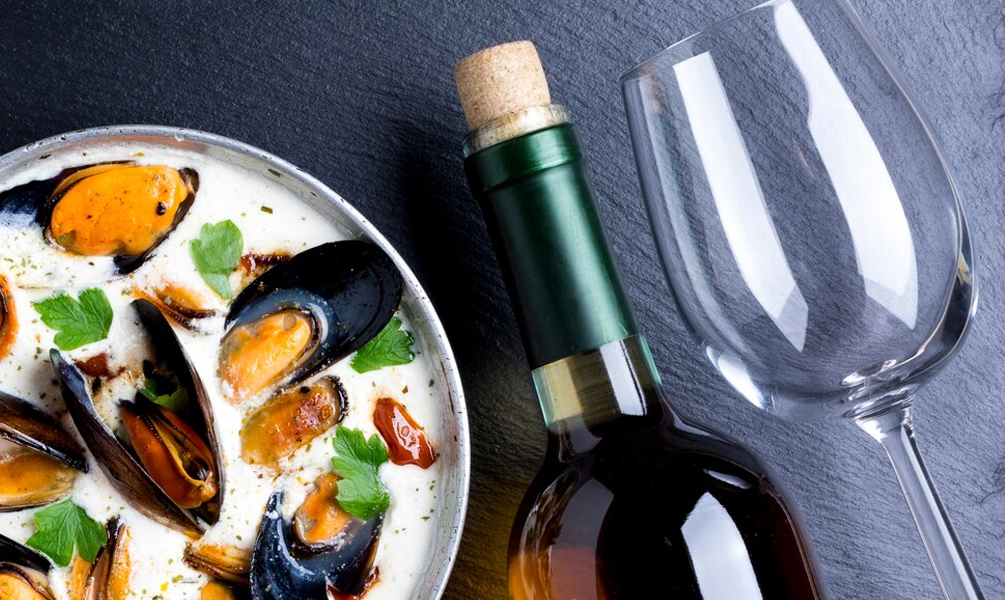
Folks often feel a wave of anxiety creeping up when it comes to food and wine pairings, with the overwhelming variety in both the wine and food worlds making the task seem daunting to begin with. Many believe that the complex art of wine pairing is best left to sommeliers and upscale restaurants, where every match is thoughtfully crafted to avoid clashes of taste and weave a harmonious tapestry of flavors, textures, and aromas. However, let me assure you—this sophisticated business of wine pairings with food is far from rocket science, and with a few simple rules, anyone can learn the craft with ease.
If you are eager to explore and learn, join us on this in-depth journey into food and wine pairings. This guide will unravel the mysteries of how different wines—be it reds, whites, rosés, or sparklings—pair with a variety of dishes, from appetizers to main courses and desserts—assisting you to choose the perfect wine for your favorite food or find the ideal dish to complement your chosen wine.
As an added bonus, we will provide insights into the best practices for storing, serving, and presenting wine and food, ensuring that your dining experience is memorable, no matter how casual, serious, or indulgent you plan the scene to be. So, scroll ahead and immerse yourself in the appetizing world of food and wine pairings. Learning this delightful art will elevate every sip and bite, impress your guests, and satisfy your inner foodie or wine lover effortlessly.
First of All, How Does Food and Wine Pairings Work?
Before diving into food and wine pairings, it’s essential to understand the key elements of both and how they together lay the foundation for the science of successful matches. These factors not only shape the distinct identities of wine and food, but also influence how they interact on your palate—either harmonizing beautifully or clashing dramatically.
Balancing Flavor Intensity: Food Meets Wine
The intensity of flavor components in food—such as salt, fat, and acid—should align with the wine’s characteristics, including sweetness, acidity, and body. For instance, red wines with their bold flavors and tannins stand up well to the chubbiness of richer dishes like beef or lamb, while white wines let their acidity shine through the lighter fare like seafood or poultry. Likewise, rosés and sparkling wines, with their refreshing and bright flavors, stand out as versatile for a variety of dishes.
Temperature Matters: Serving for Maximum Enjoyment
Temperature significantly influences the experience of both wine and food, so it's crucial to regulate their warmth and chill before serving them at the dinner table. You should serve red wines slightly below room temperature to allow the tannins to soften and flavors to emerge, chill white wines to accentuate their refreshing acidity, and serve sparkling wines at colder temperatures to preserve their effervescence.
The Power of Regional Pairings: What Grows Together Goes Together
The saying "what grows together, goes together" best frames regional pairings, as foods and wines from the same region often pair well. This is largely due to their shared climate, soil, and agricultural practices, which end up creating complementary flavors. So just in case you have a great region-representing wine, try to sizzle pans with a flavorful dish from the same region, like a bold Italian Chianti wine paired with rich, herb-infused pasta or Oregon's delicate Pinot Noir with earthy mushroom risotto.
Trust Your Taste Buds: Personal Preferences Matter
Ultimately, no matter how creative or decisive you are in crafting food and wine pairings, their success hinges on the diner’s personal taste preferences. Whether you are entertaining guests or indulging yourself, it is essential to consider how the wine and food will interact while also honoring individual palates. Don’t hesitate to experiment—delightful discoveries often come from trying unexpected combinations.
Understanding these key elements allows you to confidently craft balanced, rewarding food and wine pairings that elevate and complement each other like an expert sommelier.
Food and Wine Pairings A-Z—From Every Course To Every Bottle
As the climax approaches, delightful food and wine pairings promise an exciting experience where flavors come alive and taste buds dance. From beloved dishes to cherished wines, explore fantastic combinations perfect for unforgettable dining moments.
Salty Foods With High-Acidity & Sweet Wines
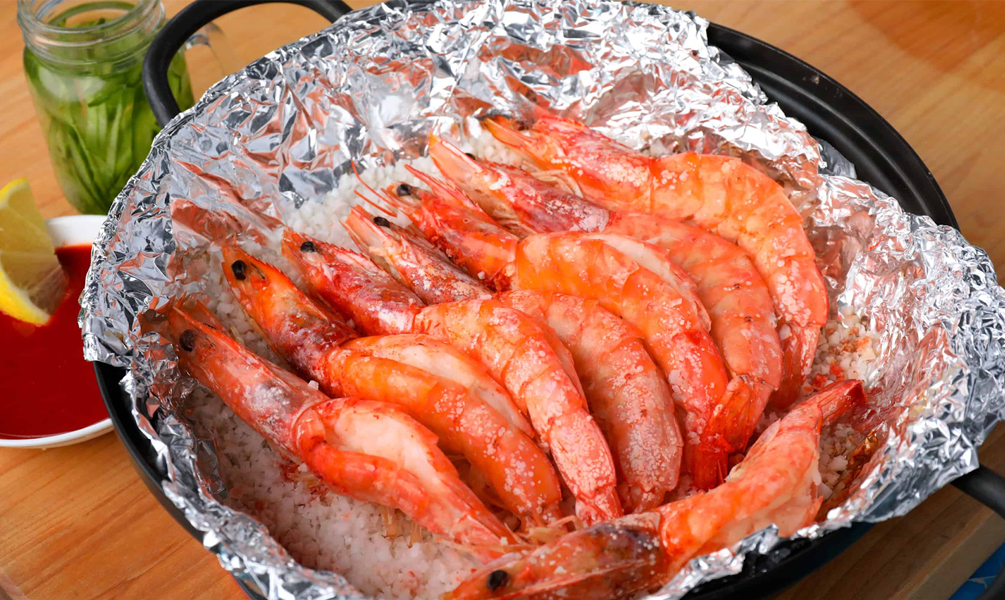
Salt calls out for that savory, mouth watering sensation in the mouth that heightens other subtle flavors in food while softening bitterness, making it a central taste in dishes like cured meats, olives, seafood, and cheeses. Salty foods provide bold palate experiences, and when it comes to salty food and wine pairings, opt for High-Acidity or Sweet Wines, where the saltiness of food makes high-acidity wines taste more balanced and less sharp, while sweetness of sweet wines gives a delightful contrast to the saltiness of food.
For instance, the bright acidity of a crisp Sauvignon Blanc complements salty oysters or feta cheese, cutting through the brininess and refreshing the palate, while sparkling wines like Champagne or Cava pair excellently with salty appetizers such as prosciutto or fried chicken, as the bubbles cleanse the palate and provide a refreshing contrast to the saltiness. On the sweet side, Ruby Port can beautifully balance the strong flavors of Stilton blue cheese, while Tawny Port pairs nicely with pretzels for a delicious, low-calorie dessert.
Top Wines To Rock Your Next Salty Dine Scene: Cloudy Bay Sauvignon Blanc, Moët & Chandon Brut Impérial NV Champagne, Churchill's 20 Year Old Tawny Por
Acidic Foods With High-Acidity Wines
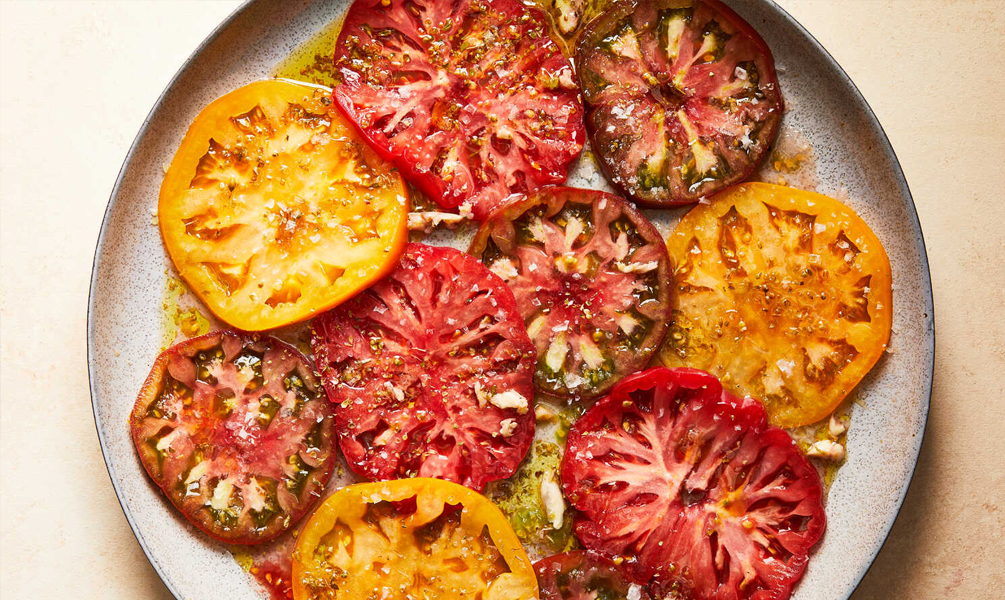
Acidity brings a bright, zesty sensation that refreshes the palate and makes your mouth water. Common acidic foods include citrus fruits, tomatoes, and vinegar-based dressings, which add tangy flavors to enliven dishes and significantly increase the concern of intensity matching in wine pairings. When it comes to acidic food and wine pairings, it's best to choose High-Acidity Wines because they well stand to the acidity of the food, in contrast to low-acidity wines, which get overwhelmed by food acidity, resulting in a dull taste while the food may feel overly tart.
For instance, a lemon-dressed salad or tomato-based gazpacho pairs beautifully with Sauvignon Blanc, while Riesling enhances spicy Asian dishes by balancing acidity with a hint of sweetness. Additionally, high-acidity Sangiovese wines from Chianti make excellent companions for spaghetti Bolognese, tomato-based pasta, and American pizza. Choosing the right wine can elevate these dishes, highlighting their flavors and providing a delightful dining experience.
Top Wines To Rock Your Next Tangy, Racy Dine Scene: Lauverjat Sancerre Sauvignon Blanc, Forge Cellars Classique Dry Riesling, Tenute Silvio Nardi Brunello di Montalcino
Fatty Foods With High-Acidity & Strong Tannins Wines

Fat brings out that rich, creamy texture that coats the palate, offering indulgent satisfaction via foods like cheeses, fatty meats, butter-based sauces, and fried dishes. Fatty foods can linger on the palate, sometimes overwhelming the taste buds with their richness, requiring the right wine to balance its richness to create a luxurious and harmonious pairing. When it comes to fat food and wine pairings, it is best to opt for High-Acidity or Strong Tannins Wines, which will cut through the fat and refresh the palate.
For instance, a crisp, acidic wine like a minimally oaked Chardonnay or Sauvignon Blanc pairs beautifully with buttery lobster, butter cream sauce, mac and cheese, or creamy pasta dishes, providing a contrast that enhances both the richness of the food and the freshness of the wine. In contrast, fatty red meats such as steak, lamb, or fashion hamburger benefit from a tannic red wine such as Cabernet Sauvignon or Nebbiolo, which gracefully binds their tannins with the proteins in the fat, cleansing the palate and reducing the perception of heaviness.
Top Wines To Rock Your Next Rich, Creamy Dine Scene: Catena Oaked Chardonnay, Quilt Thread Count Sauvignon Blanc, Caymus Napa Valley Cabernet Sauvignon, Gaja Dagromis Barolo
Sweetness-Rich Foods & Equally Sweet Wines

Sweetness provides a smooth, comforting sensation, often lingering with a sense of richness via desserts, fruits, and sweet glazes, caramelized vegetables, or chocolate. However, sweet foods pose a challenge: their high sugar content can overwhelm the palate, making it essential to choose Equally Sweet Wines for sweet food and wine pairings. This balance ensures that the fruity, floral, and nuanced flavors in both the food and wine complement each other—if the wine is less sweet than the food, the flavors may seem muted; if the wine is too sweet, it can overpower the dish.
It's safe to say that pairing classic red wine with chocolate or Champagne with wedding cake is a mistake! Instead, choose dessert wines such as Sauternes, Moscato, and Ice Wine that offer a harmonious match for sweets like fruit tarts, crème brûlée, or dark chocolate. For instance, the honeyed notes of a Sauternes elevate the richness of an apricot tart, while the soft bubbles and light sweetness of Moscato pair beautifully with fresh fruit salads or meringues. Ice Wine, with its concentrated sweetness and acidity, can enhance the complexity of a dark chocolate mousse or a rich berry compote.
Top Wines To Rock Your Next Sugary, Decadent Dine Scene: Château D'Yquem Sauternes, Inniskillin Riesling Icewine, Emilio Vada Moscato d'Asti
Spicy Foods With Fruity Low Tannins, Low Alcohol & Off-Dry Wines.
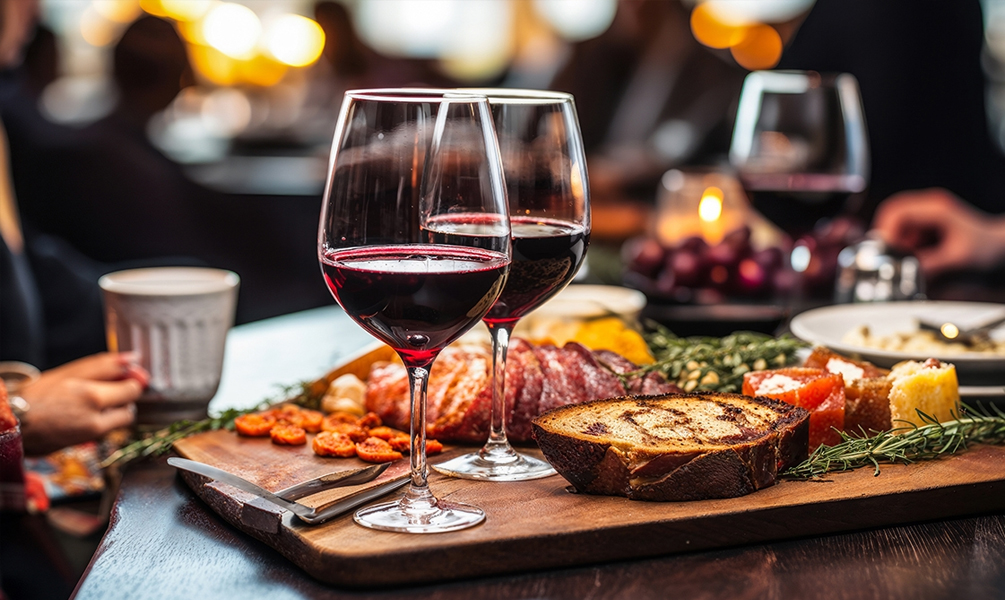
Spicy flavors create a tingling, at times burning sensation on the palate, often found in cuisines like Indian, Thai, or Mexican, where chilies, hot sauces, and spices play a central role. Spiciness adds depth, heat, and excitement to food, making its intensity a challenge when finding a wine that cools the palate without clashing with the bold spices. When it comes to spicy food and wine pairings, it is suggested to opt for Fruity Low Tannins, Low Alcohol, or Off-Dry Wines.
For instance, off-dry wines like Riesling and Chenin Blanc work particularly well, as their slight sweetness helps mitigate the heat from spicy dishes like Thai green curry and Indian vindaloo, cooling the palate and making the spiciness more manageable. Additionally, fruity, low-tannin wines like Zinfandel, Pinot Noir, and Provençal rosés are excellent options for barbecued meats or Szechuan dishes, as their ripe fruit flavors soften the intensity of the heat. Lastly, low-alcohol wines ensure they don't amplify the warmth of the food, preventing the meal from seeming spicier than it truly is.
Top Wines To Rock Your Next Hot, Fiery Dine Scene: Forge Cellars Classique Dry Riesling, Rombauer Vineyards Zinfandel, Whispering Angel Provence Rosé, Domaine Nicolas Rossignol Savigny Les Beaune Pinot Noir
Bitter Foods With High-Acidity & Fruity Wines
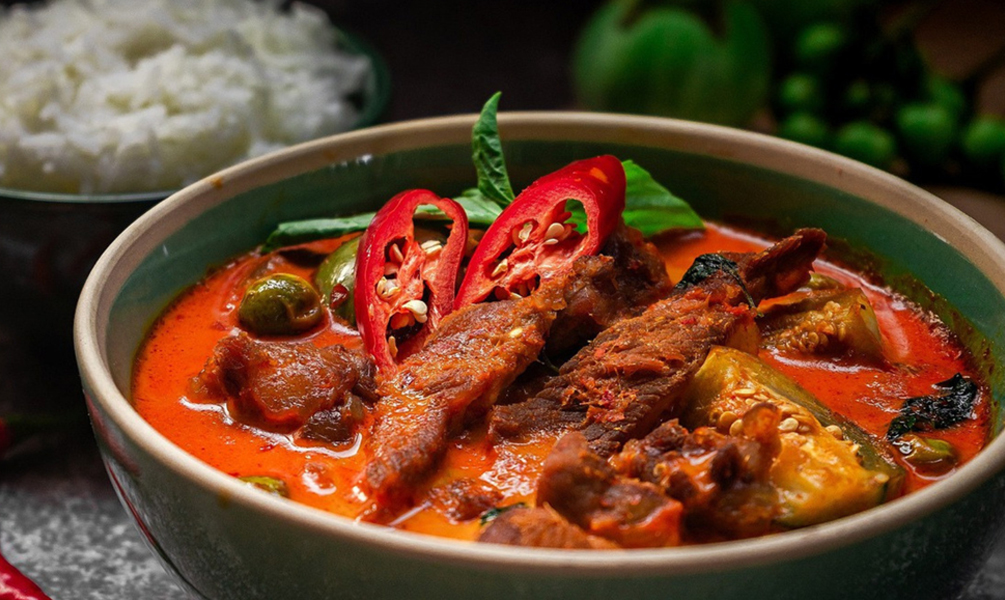
Bitter flavors found in dark chocolate, coffee, leafy greens like kale and arugula, and certain herbs offer a sharp, slightly astringent sensation that can be polarizing but adds complexity, depth, and a refreshing edge to rich or sweet dishes. For bitter food and wine pairings, we suggest choosing High-Acidity or Fruity Wines, as acidity in wine helps to soften the sharpness of bitter flavors, making the overall palate experience smoother, while fruity wines provide a sweet contrast to bitterness, softening the edges and creating a balanced, layered taste.
For example, a Sauvignon Blanc or Pinot Grigio, with their crisp acidity, can lighten the bitter bite of a salad with arugula or radicchio. On the red wine side, Merlot or Barbera, which feature softer tannins and ripe fruit, are excellent choices for pairing with dark chocolate or grilled vegetables. These wines provide a smooth contrast to the bitterness, allowing other flavors in the dish to stand out.
Top Wines To Rock Your Next Sharp, Grippy Dine Scene: Oyster Bay Sauvignon Blanc, Santa Margherita Pinot Grigio, Decoy Merlot, Michele Chiarlo Le Orme Barbera d'Asti
Umami-Rich Foods With Moderate-Acidity & Delicate Fruit Wines

Lastly, umami, often referred to as the fifth taste, delivers a savory, meaty, and deeply satisfying sensation on the palate, providing a sense of fullness and complexity. Foods that are naturally high in umami include mushrooms, soy sauce, aged cheeses, cured meats like prosciutto, and dishes such as miso soup or slow-cooked broths. These are superbly depthful, substantial, and savory, which is why, when it comes to pairing umami-rich foods with wine, it is ideal to opt for Moderate-Acidity or Delicate Fruit Wines with low tannins.
Avoid high tannin wines like Cabernet Sauvignon and Tannat, as they can clash with umami flavors, leading to a metallic or bitter aftertaste. Meanwhile, moderate-acidity wines like Pinot Grigio and Chardonnay refresh the palate by lifting the flavors in umami-rich dishes such as mushroom risotto and beef stew. Mild fruity notes in wines like Pinot Noir and Grenache bring a delightful contrast to the savory, earthy notes of umami-rich dishes like truffle pasta and grilled eggplant.
Top Wines To Rock Your Next Meaty, Savory Dine Scene: Zenato Pinot Grigio, Cakebread Cellars Oaked Chardonnay, Belle Glos Clark & Telephone Vineyard Pinot Noir
Food And Wine Pairings At a Glance
| FOOD TYPE | SUITED WINE TYPE | WINE SUGGESTIONS | DISHES TO PAIR WITH |
|---|---|---|---|
| Salty | High-Acidity Wines | Sauvignon Blanc | Salty Oysters, Feta Cheese |
| Champagne/Cava | Prosciutto, Fried Chicken | ||
| Sweet Wines | Ruby Port | Stilton Blue Cheese | |
| Tawny Port | Pretzels | ||
| Acidic | High-Acidity Wines | Sauvignon Blanc | Lemon-Dressed Salad, Tomato-Based Gazpacho |
| Riesling | Spicy Asian dishes | ||
| Sangiovese | Spaghetti Bolognese, Tomato-Based Pasta, American Pizza | ||
| Fatty | High-Acidity Wines | Chardonnay/ Sauvignon Blanc | Buttery Lobster, Butter Cream Sauce, Mac And Cheese |
| Strong Tannin Wines | Cabernet Sauvignon/ Nebbiolo | Steak, Lamb, Fashion Hamburger | |
| Sweet | Equally Sweet Wines | Sauternes | Apricot Tart |
| Moscato | Fresh Fruit Salads , Meringues | ||
| Ice Wine | Dark Chocolate Mousse, Rich Berry Compote | ||
| Spicy | Fruity, Low Tannins Wines | Zinfandel, Grenache, Provence Rosé | Spicy Barbecued Meats, Szechuan Dishes |
| Off-Dry Wines | Riesling, Chenin Blanc | Thai Green Curry, Indian Vindaloo | |
| Bitter | High-Acidity Wines | Sauvignon Blanc, Pinot Grigio | Salad With Arugula or Radicchio |
| Fruity Wines | Merlot, Barbera | Dark Chocolate, Grilled Vegetables | |
| Umami | Moderate-Acidity Wines | Pinot Grigio, Chardonnay | Mushroom Risotto, Beef Stew |
| Delicate-Fruit Wines | Pinot Noir, Grenache | Truffle Pasta, Grilled Eggplant |
What Are the 2 Basic Rules for Wine Pairings?
The general rule of food and wine pairing is to consider the core taste element of your dish and then align with the kind of wine it appeals to. For instance, if your dish is superbly salty, it will match well with a sweet wine like Sauternes or a high-acidity wine like Sauvignon Blanc.
But apart from that, there are two methods of pairing wine and food that are in huge adaptance—Congruent and Contrasting Wine Pairings. They both revolve around the idea of balance, as follows:
- Congruent Wine Pairings: This method attempts to pair similar flavors of food and wine so that they enhance each other and create a good balance. For instance, a creamy oaked Chardonnay with creamy lobster bisque.
- Contrasting Wine Pairings: In comparison, the method aims to pair contrasting flavors together so they cut through each other without compromising balance. For instance, the same creamy lobster bisque that melds beautifully with the flavors of an oaked Chardonnay will receive a beautiful, racy piercing from a high-acidity wine such as Pinot Grigio.
So, at the end, food and wine pairings do work around general rules of what flavor works with what kind of wine; in between there is a big room for pairings that offer both contrasting as well as harmonious balance.
How To Store Food and Wine Before Serving?
If you’ve selected your food and wine pairing well ahead of serving, it’s essential to store both properly to maintain their freshness. Here are a few tips to do it right:
-
Wine Storage Tips?
To store wine effectively, keep it in a cool, dark place like a wine cellar or your regular home fridge, ideally around 45°F for whites and slightly warmer for reds. Make sure humidity levels are between 50 and 70%, and place bottles horizontally to prevent corks from drying out, which can let air seep in and oxidize the wine. Keep in mind that wines are delicate drinks that also require protection from harsh sunlight, fluorescent lights, and any vibrations nearby.
-
Food Storage Tips
If you're planning to serve hot dishes, that's great, but if you're pairing your wine with cheese or cold appetizers, proper storage is essential. Store cheese in the refrigerator after wrapping it in wax or cheese paper to allow it to breathe without drying out, and store other food items in airtight containers to maintain freshness and prevent odor contamination. And once in a while, keep checking for any signs of spoilage or unwanted odors.
By following these storage guidelines, you can ensure that your food and wine remain at their best, ready for your next gathering or quiet evening at home!
How To Serve Your Food and Wine Pairing?
Serving the ideal food and wine pairing is all about creating an enjoyable experience that tantalizes the taste buds and boosts the flavors of both compounds. Here’s a guide to doing it right:
-
Start With The Ideal Temperature
To kick off your food and wine pairing, serving them at the right temperature is crucial, as this simple adjustment amplifies the flavors, allowing each sip and bite to truly shine. Serve white wines chilled at 45-50°F, and serve red wines slightly cooler than room temperature, at 60-65°F.
-
Pick The Right Glassware And Utensils
Choosing the right glassware is key to enhancing your dining experience—use larger-bowled glasses for red wines to allow for better aeration and narrower glasses for white wines to concentrate their aromas. Rest, pair with suitable utensils, and you’ll create an accessible table that invites everyone to enjoy.
-
Fingerlicking Additions For a Mile-Ahead Pairing
Don’t underestimate the power of delicious accompaniments! Fresh herbs, zesty sauces, and flavorful sides can transform a meal. These elements work in harmony with both your food and wine, amplifying flavors and creating a dining experience that’s not just good but truly unforgettable.
-
Focus On The Pace
Timing is everything when serving a meal. Take your time with each course, allowing everyone to savor flavors and enjoy conversation. A leisurely pace lets guests fully appreciate each dish and sip, transforming your gathering into a delightful culinary journey that lingers long after the last bite.
How To Present Your Food and Wine Pairing?
Presenting food and wine in a visually appealing way can elevate your gatherings and create a delightful experience for your guests, especially when you are hosting a high-end dinner party. Here are some tips for creating a beautiful presentation:
-
Thoughtfully Arrange Your Food and Wine
Pay close attention to how you arrange your food and wine to create an attractive ambiance. For appetizers, use a large dish and creatively arrange cheeses, charcuterie, and fruits. For main courses, use attractive serving dishes and arrange components in visually pleasing ways, such as stacking or layering. When serving wine, use appropriate glassware and position the bottles prominently, such as on a stylish wine stand or ice bucket. Aim for balance in color, texture, and height to pull the eye and create a coherent style that elevates the dining experience.
-
Polish The Presentation With Labels
Labels enhance the appearance of your food and wine by adding information and sophistication. Use elegant card paper or blackboard labels to identify each dish and wine, along with crucial ingredients and tasting remarks. Indicate the varietal, region, and vintage of wine to help your guests learn and enjoy it. This not only helps diners make sound choices, but it also adds to the overall aesthetic of your table setup. You can even choose to go a mile ahead in detailing by establishing a theme by matching the label design to your décor.
-
For a Finishing Touch
To round off your food and wine pairing presentation, consider adding decorative pieces that appeal to the entire atmosphere—fresh flowers, seasonal fruits, beautiful candles, and table linens that complement your color scheme. Make sure that each place setting, including napkins and silverware, is carefully organized. And how about a soundtrack to further build the mood? Finally, consider giving a little introduction to your pairings to engage your guests and make it a memorable experience. These final touches help to create an exceptional dining experience that will stay with your guests long after the evening has ended.
Final Thoughts
As we conclude this captivating food and wine pairing guide, we hope it has provided you with valuable insights, no matter what your dining plans may be. This guide covers all the possibilities for a truly indulgent dining experience, from selecting the perfect wine for a dish, choosing the ideal dish for wine, and expertly storing, serving, and presenting a food and wine pairing.
For a quicker way to savor or share food and wine pairings with loved ones, be sure to explore our collection of thoughtfully curated wine gift baskets and champagne gift baskets. Discover a variety of wines, ranging from reds to whites, roses, sparklings, dessert wines, and more, paired with the delectable flavors of cheese, chocolate, and other scrumptious additions, all at competitive prices with reliable nationwide delivery, from east coast Florida to west coast California.
Frequently Asked Questions About Food and Wine Pairings:
-
Why Is Food and Wine Pairing Important?
Food and wine pairing is important because it balances the flavors, aromas, and textures of both wine and dish, elevating both and making the overall dining experience all the more enjoyable, with no clashing flavors serving a muted or harsh taste.
-
What wine goes best with everything?
Sparkling wine, especially Champagne or Prosecco, is often considered the most versatile option as their acidity and effervescence can complement a wide range of foods, from salty to sweet.
-
What is the most difficult food to pair with wine?
Sifting a lens into the world of food and wine pairings, asparagus seems to be notoriously difficult to pair with wine, as most wines struggle to stand up to its unique bitterness and green flavors, often clashing with its taste profile.
-
Which food should not be paired with wine?
Wine and food pairings are rewarding when you are good at bringing in a match where flavors of food and wine meld beautifully and embrace each other, but it can be challenging to pair wine with certain food items due to their complexities—like superbly bitter asparagus, mild artichokes, nutty Brussels sprouts, tangy pickled items, sour vinegar, and savory soy sauce.
Stay tuned for more vinous adventures ahead, and keep visiting us for future inspiration!
















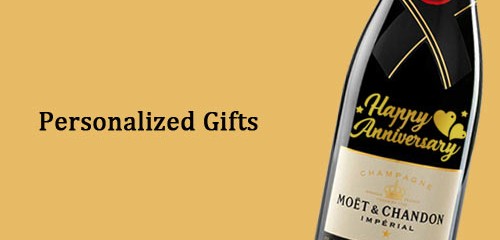
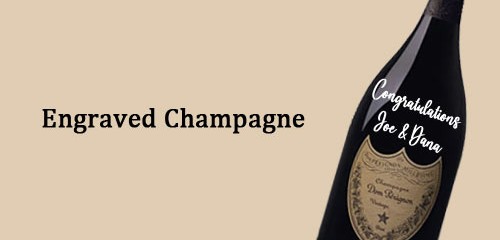


























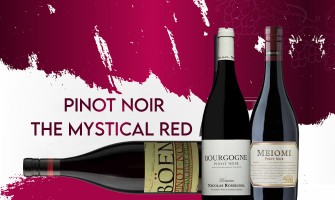











Leave a Comment